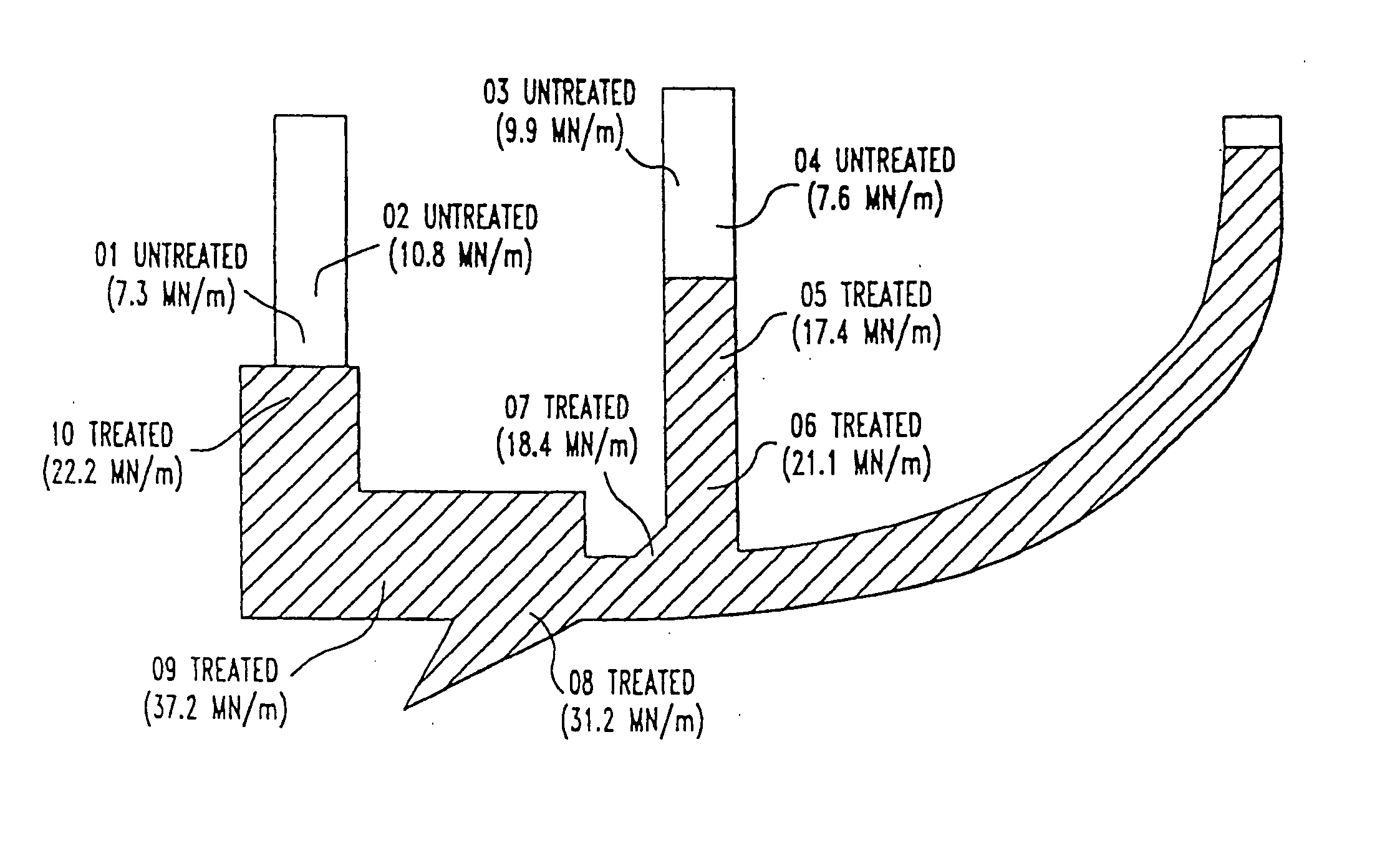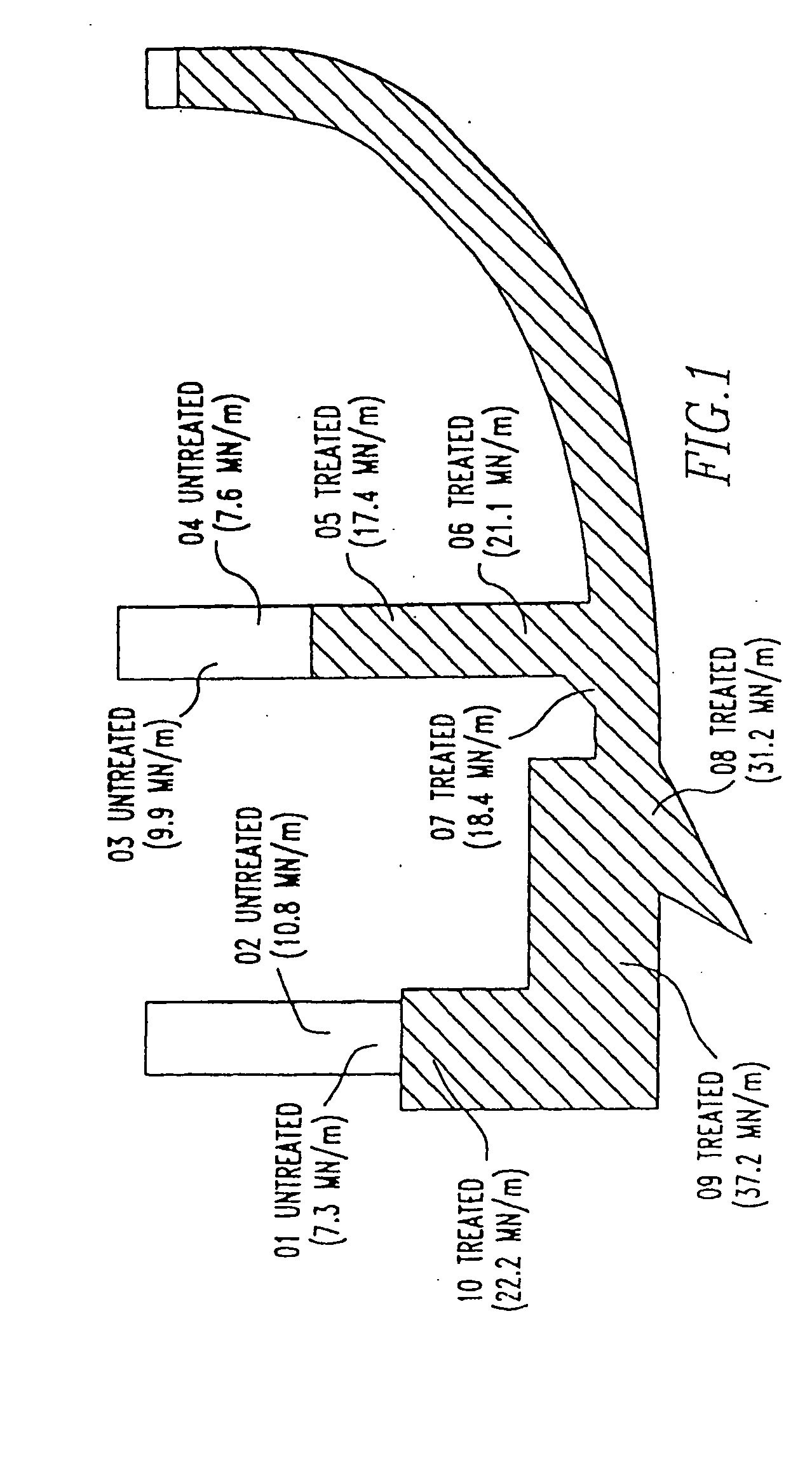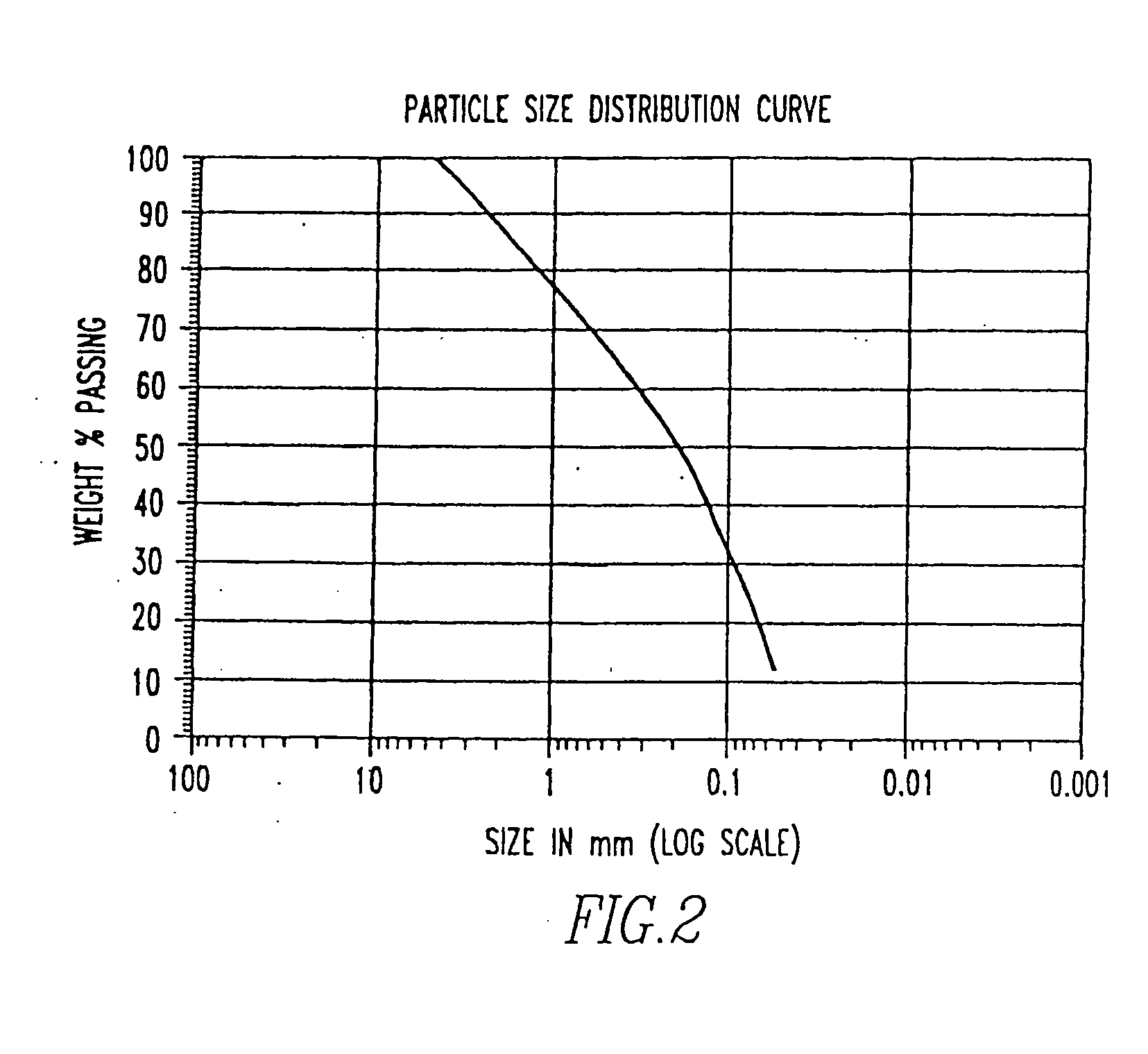Method of chemical soil stabilization and dust control
a soil stabilization and dust control technology, applied in the direction of detergent powder/flakes/sheets, soil conditioning compositions, applications, etc., can solve the problems of limited value of petroleum oils as dust suppressants, cost prohibitive for most applications, and virtually no value of soil stabilizers
- Summary
- Abstract
- Description
- Claims
- Application Information
AI Technical Summary
Benefits of technology
Problems solved by technology
Method used
Image
Examples
examples of first embodiment
Example 1
[0033] This example discloses a formulation for producing a heterogeneous mixture depicted in our invention.
ConstituentTrade NameManufacturerWeight %1.Severely hydrotreated50 NeutralPetro-Canada39%paraffinic hydrocarbonsHT2.Synthetic iso-alkanesDSF-65Petro-Canada33%3.Mixture of long chainTallexWestvaco28%and tricyclic organicChemicalacids and esters ofsterols and fatty acids
[0034] The Tallex material is maintained at 45-135 degrees centigrade and blended into the remaining materials using conventional blending equipment or agitation.
example 2
[0035] This example discloses a formulation for producing an emulsion.
ConstituentTrade NameManufacturerWeight %1.Severely hydrotreated50 NeutralPetro-Canada16%paraffinic hydrocarbonsHT2.Synthetic iso-alkanesDSF-65Petro-Canada13%3.Mixture of long chainTallexWestvaco11%and tricyclic organicChemicalacids and esters ofsterols and fatty acids4.Water48%5.lignosulfonateIndulin SALWestvaco10%Chemical6.polyoxypropylenePluronic F68BASF 2%
[0036] The Tallex material is maintained at 45-135 degrees centigrade and blended into the remaining materials using conventional high shear mixers, mixer / emulsifiers, colloid mill, or other suitable mixing equipment.
first embodiment
Test of First Embodiment
[0037] A 5,000 square meter test plot was prepared to test the effectiveness of the invention as a dust control agent and soil stabilizer. A severe test in an intensely utilized area was required. A slag reclamation area in the continuous caster process of a large Cleveland, Ohio steel mill was chosen for the test. The plot selected operates 24 hours / day, 5-7 days / week and averages over 100 vehicle passes per day with the majority of vehicles large pot haulers, front-end loaders with steel-chained tires, and tractor-trailers.
[0038] Various treatments had been utilized in this area in the past including watering, chlorides, and asphalt emulsions with limited success. Applications of these chemical agents were typically 1-2 times daily for dust control. Historical applications rates for 60% solids asphalt emulsions ranged between 0.15-0.40 liters / square meter daily.
[0039] Initial observations of the surface prior to testing revealed a slag covered road compri...
PUM
| Property | Measurement | Unit |
|---|---|---|
| Fraction | aaaaa | aaaaa |
| Fraction | aaaaa | aaaaa |
| Fraction | aaaaa | aaaaa |
Abstract
Description
Claims
Application Information
 Login to View More
Login to View More - R&D
- Intellectual Property
- Life Sciences
- Materials
- Tech Scout
- Unparalleled Data Quality
- Higher Quality Content
- 60% Fewer Hallucinations
Browse by: Latest US Patents, China's latest patents, Technical Efficacy Thesaurus, Application Domain, Technology Topic, Popular Technical Reports.
© 2025 PatSnap. All rights reserved.Legal|Privacy policy|Modern Slavery Act Transparency Statement|Sitemap|About US| Contact US: help@patsnap.com



